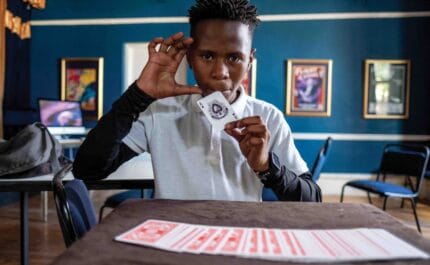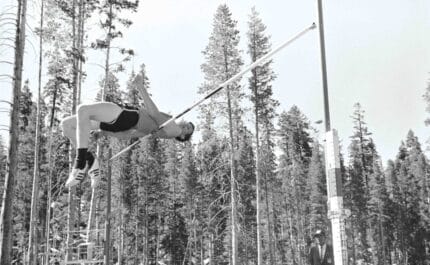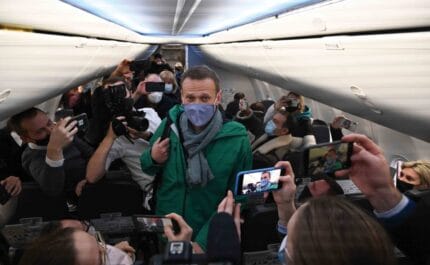Mixing business with treasure – the hunt for £125 billion in shipwrecked gold
On 20th October a major salvage operation set sail from an undisclosed British port intent on tracking down lost war gold. Wreck diving for treasure is a high-risk, high-adrenaline calling, as we discovered in DG #29 when we met the intrepid cargonauts who scour the seas for billions in sunken bullion

Illustrations: Angus Greig
20th October 2017 (Taken from: #29)
“You fucking bastard. Look what you’ve done to my ship!” It wasn’t the normal way to address one’s superior aboard a British Royal Navy cruiser, especially when the man being abused was a freshly knighted rear admiral.
But these were exceptional circumstances. It was April 30th 1942, the height of World War II, and HMS Edinburgh – the flagship of rear admiral Sir Stuart Bonham Carter, which was under the command of the effing and blinding Captain Hugh Faulkner – had just taken a direct hit from a German U-boat.
The Edinburgh was leading convoy QP 11, a group of 13 merchant ships escorted by 18 warships crossing from Murmansk in Russia to Scapa Flow off the coast of Scotland. Faulkner believed the torpedoing of the Edinburgh was Bonham Carter’s fault for having demanded he change the ship’s course with the immortal words “I say, old boy, let’s go over and have a look at the ice, shall we?”, ignoring warnings that German U-boats would often lie in wait beneath intriguing-looking icebergs.
The German wolfpack attacked, landing two direct hits on the Edinburgh. With the ship taking water and listing dangerously, the crew was ordered portside to even things out. The ship righted, but by then three German destroyers were closing in for the kill. The Edinburgh fought gallantly, sinking one destroyer, but took a further torpedo hit, and 57 British seamen died during the exchange. Bonham Carter gave the order to abandon ship.
Bonham Carter and Faulkner may have disagreed on icebergs, but they shared a powerful secret. They were two of only a handful of people who knew that as their ship went down it was taking five-and-a-half imperial tons of gold bullion with it. Back then it was worth £1.5 million. Today, thanks to the rising price of gold, £173 million. And it was all sitting at the bottom of the Barents Sea.
Raiding Davy Jones’s locker
Philip Reid is a man who loves a good maritime tale, but his interest is professional as well as personal – as a businessman, he has scented an opportunity beneath the ocean waves. “Wars are expensive,” he says. “During both world wars Britain didn’t have a great deal of cash, but what it did have was gold and we shipped it around the world to pay for supplies.”
As Bonham Carter discovered, shipping gold during a war was fraught with danger. “Just 36 percent of war gold reached its destination,” says Reid. “So over 60 percent is down there somewhere. And we’ve decided to go and get it.” There’s a lot of it to get. Reid believes that his firm, Britannia’s Gold, has located British bullion worth £125 billion lying in Davy Jones’s locker. “People will call it a treasure hunt, but this isn’t a treasure hunt – it’s a rescue mission. We know exactly where it is,” he says.

It is a mission that’s been 25 years in the making. “By sheer chance in the early ’90s a researcher turned up a misfiled government document regarding gold movements,” says Reid. Inspired, the researcher started piecing together gold movements throughout the world wars, building a body of work that – through a convoluted chain of connections taking in American investors, Swiss bankers and Reid’s brother-in-law – came into Reid’s hands. “It’s a massive jigsaw puzzle, but what the researcher emerged with was proof of what gold was sent out, which route it took and, if it sank, where,” says Reid. “The results are staggering.”
The research identified 7,500 sunken merchant ships, 700 of which were carrying gold. After having the data inspected by the University of Oxford and the English Naval History Society, Reid launched Britannia’s Gold, a company offering an unlikely investment opportunity. Backers could finance a series of salvage operations and, should they be successful, reap extraordinary rewards. It’s a costly enterprise: Reid estimates that salvage missions cost £50,000 a day and can take up to 45 days.
He believes it’s worth the expense. “If the cargoes on any of the ships are what we forecast, then the results will be absolutely ridiculous,” he says. “An average cargo would yield £100 million.” A series of investors and supporters agreed, including James Fisher & Sons, Britain’s largest marine services company.
“The salvage industry has a bit of a treasure hunter reputation,” says Nick Henry, the company’s CEO. “The interesting thing about Britannia’s Gold is that the proposition is based on data research. They aren’t just marine people, they are archivists.” Reid successfully raised more than £3 million and, on 20th October 2017, the first Britannia’s Gold expedition left from an undisclosed port, setting sail in search of an untold fortune.
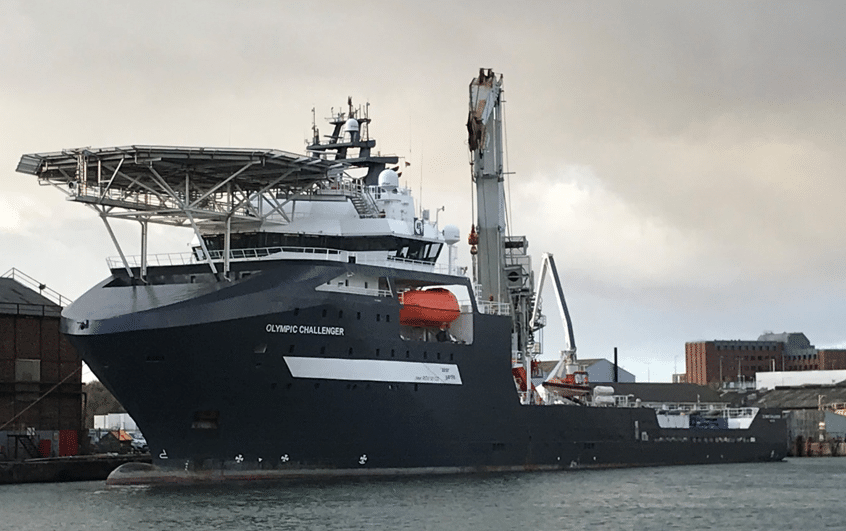
The salvage vessel used on the Britannia’s Gold mission, 24 hours prior to departure. Photo: Britannia’s Gold
The salvage of the century
One gold shipment not on the Britannia’s Gold hitlist is that of HMS Edinburgh – somebody got there first. In 1981 an operation led by diving company Wharton Williams Ltd was given permission by the British government to attempt to locate the Edinburgh and recover the gold on board.
Ric Wharton, the man behind Wharton Williams Ltd, is sceptical of Britannia’s Gold’s chances. “I’m one of the most jaundiced people about these projects,” he admits. Wharton doesn’t doubt that the company’s academic research is compelling, but believes that documentation alone is not enough. “At the time we looked at the Edinburgh, a number of the crew were still alive. You cannot beat that,” he says.
In April 1981 Wharton’s salvage mission located the Edinburgh and filmed the wreckage – now entombed under more than 800 feet of water – using the basic equipment available at the time. “You could have driven a double-decker bus through those torpedo holes,” remembers Wharton. Finding the ship was one thing, but finding the gold was another. “These ships are 600 feet long and made up of a honeycomb of little compartments,” says Wharton. “You’ve got to know where you’re looking.”
“We calculated that if the boxes of gold had been stacked up high then when the boat sank they would have smashed straight through a bulkhead and into the ammunition store where we’d never be able to get them out,” says Wharton. The team managed to track down the sailor charged with stowing away the gold – a man who wasn’t supposed to know what he was dealing with. “As the cargo was being loaded, a box broke open to reveal the gold,” says Wharton. “Our man was sent down to repack it. So I said to him, ‘It’s the $64,000 question: how did you stack the boxes up?’ ‘Stack them up?’ he replied. ‘They weighed a ton… We just spread them out and stuck all the other kit on top of them.’ Now we knew that instead of being two feet above the floor, the gold was about two inches. We did the impact calculations and came to the conclusion that the gold probably wouldn’t have broken through the bulkhead. The entire salvage operation, which cost £3 million in 1981 [the equivalent of £12 million today] was based on that piece of information.”
So what does Wharton think when he sees organisations like Britannia’s Gold who have to operate without the benefit of witnesses? “I think ‘Naaaaaah…’”, he says, shaking his head.
The waiting game
Will Carrier was employed by Wharton Williams Ltd during the salvage of the Edinburgh and is now operational director of Britannia’s Gold. He can understand his former boss’s concerns, but thinks time has brought benefits as well as drawbacks.
“I’ve seen the evolution of equipment and the potential it has to revolutionise salvage,” he says. “The oil companies have invested in equipment for finding oil that is easily converted for salvage missions and – thanks to the slump in the oil industry – it’s much more affordable than before.”
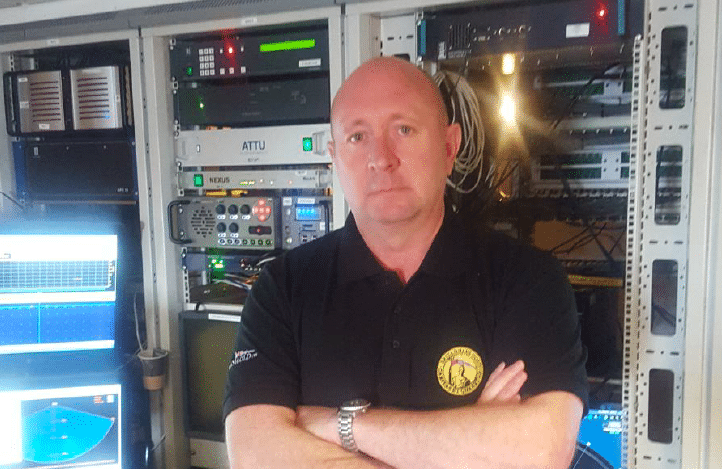
Will Carrier, operations director for Britannia’s Gold. Photo: Britannia’s Gold
Rather than the video equipment used on the Edinburgh, Carrier uses acoustics for the majority of his surveys. “We send down cameras that record using sound,” he explains. “They allow us to build detailed 3D representations of the wreck. We make our plans based upon the wreck that we’re actually looking at. Then off we pop and get on with the salvage.”
“Off we pop” might be understating things a bit. The mission that left in October 2017 featured 56 crew members and a 109m-long ship with a 250-tonne crane onboard. They were at the site for a month, with two shifts working around the clock. “This is not a smash-and-grab affair,” says Carrier, who also worked on the salvage of the Russian nuclear submarine Kursk in 2001. “We need to surgically cut into the wreck, creating the least amount of disturbance. Each wreck is individual and has to be assessed as such. But there is always the same feeling of excitement on seeing any of them properly for the first time after years of studying them on paper. Exploring the shipwreck and seeing her as she was so many years ago, discovering artefacts and items of cargo and bringing them to the surface never fails to set the pulse racing.”
Pulses didn’t quicken as much as hoped in October when Britannia’s Gold explored its first wreck. “Every last nook and cranny, every last cubic inch was just full of silt,” says Carrier – and there was worse to come. “We also came across quite a large number of 4.7-inch shells,” continues Carrier. Faced with live ammunition and deteriorating weather conditions, the crew was forced to go home. Carrier is philosophical about the setback. “It’s a waiting game,” he says.
It’s quite a risk for us to take. We’re the ones fronting the costs – not knowing how much we get to keep is frustrating”
Wharton knows exactly how the waiting game feels. The Edinburgh mission ran over time and over budget, stretching his company to its limit. “We had everything riding on this including our houses,” he remembers. “If there’d been any more delays we’d have had to abandon the entire thing.”
Due to the secrecy around the operation, Wharton and his colleagues developed a code book built around greyhound racing terminology. “The term to say that we found the gold was ‘Dog 36’,” he says. “My wife and I were at a dinner party and I was called out to the kitchen to take a call. I went back in, shaking, and sat opposite my wife. I got her attention and said, ‘We’ve got a Dog 36.’ That moment is forever imprinted on my memory.”
The team had struck the motherlode. The gold they brought to the surface remains the greatest amount of bullion ever recovered and at the greatest depth. Not that Wharton got to keep all of ‘the salvage of the century’, however. “The British and Russian governments got 55 percent,” he says. “The remainder was split amongst the contractors involved in the operation. Still, we all did very well out of it.”
Should Britannia’s Gold’s missions prove successful, Wharton has one piece of advice: beware the tax man.
As the Edinburgh – like all sunk HMS vessels – was a war grave, the British government had been required to sanction the salvage mission. “Despite having a contract, as we were heading back they said, ‘You’re importing gold. You’ve got to pay VAT on it,’” says Wharton. “Thankfully we stopped the boat and managed to sell to the London gold market while still at sea. We got away with that by the skin of our teeth.”
People said to me, ‘Talk to me when it goes well.’ What they don’t seem to realise is that, if it goes well, I’ll never need to speak to them again”
While the managers of Britannia’s Gold are very aware of the need to be respectful, all the vessels they have identified are merchant ships and thus not classified as war graves. They acknowledge, however, that the amount the government might look to claim is a risk factor. “The government is the legal owner of the cargo,” says Reid. “But they don’t appear to be interested. At the moment it’s a case of ‘If you do find it, then we will talk to you’. But that’s quite a risk for us to take. We’re the ones fronting the costs – not knowing how much we get to keep is frustrating.”
It could also prove costly. In 2007 it was announced that US company Odyssey Marine Exploration (OME) had discovered the Spanish frigate Nuestra Señora de las Mercedes, which sank off Portugal in 1804, and recovered an estimated US$500 million (£314 million) worth of silver and gold coins from the wreck. The Spanish government filed a claim against the recovered cargo saying it belonged to them. A US court agreed and in 2012, Odyssey was ordered to return every last doubloon to the Spanish government.
“It was very disappointing,” says Mark Gordon, OME’s CEO & president. “We followed the legal rules, but politics and ulterior motives can still prevent the right thing from happening. We believe a representative sample [of any find] should be kept in a permanent museum collection and that the rest should be made available for sale, with the economic proceeds shared between the salvor and the authorised government or owner. The UK government already has a very effective law in place for finds made on land and since implementing this law, the number of ‘reported finds’ has increased dramatically.”
Even without an agreement in place, Britannia’s Gold believes the rewards warrant the risks. But the clock is ticking. Carrier says that the window for being able to rent the equipment they need cheaply is “two to three years” before the oil industry recovers. There’s also the chance that somebody else will find the wrecks first. But the biggest concern, according to Reid, is that they will just run out of money.
“Quite simply, the day you don’t pay your salvage vessel is the day it turns around and goes home,” he says. “Given the technology nowadays, no salvage is too difficult – the issue is economic. We could actually plan multiple salvages, we have more targets than you can shake a stick at. We could probably do 12 this year alone if we had the money.”
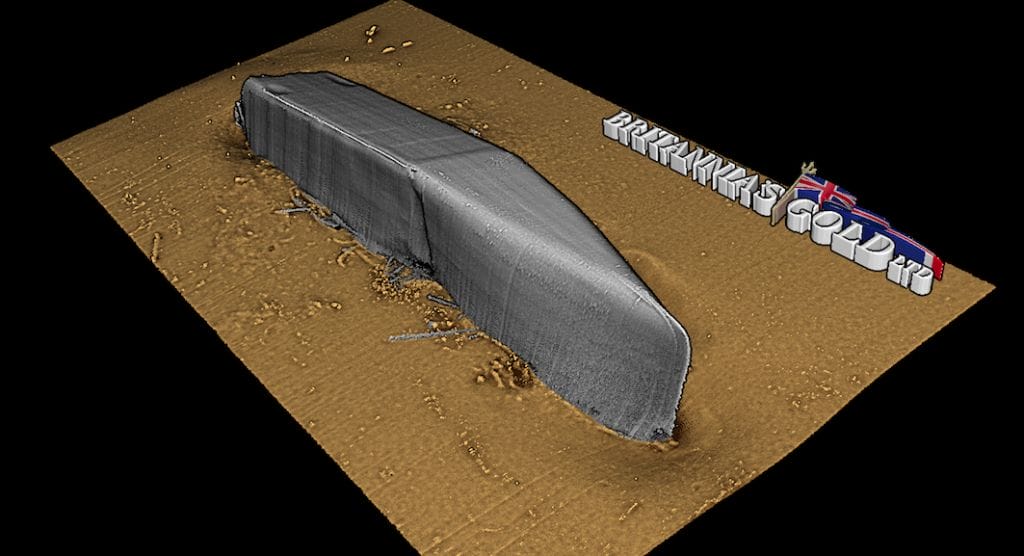
Modelling the target wreck using 3D mapping technology. Image: Britannia’s Gold
Carrier agrees. “There are three-and-a-half million shipwrecks lying on the sea bed,” he says. “The majority of the world’s gold reserves reside somewhere within a small portion of them. The shallower ones have probably been pillaged over the years, but the deeper ones have basically been left untouched due to the technology not allowing salvage missions to get that deep – until now.”
And so it all comes back to the backers. “There’s a healthy degree of scepticism,” admits Reid. “People said to me, ‘Talk to me when it goes well.’ What they don’t seem to realise is that, if it goes well, I’ll never need to speak to them again.”
While Ric Wharton won’t be investing himself, he wishes Reid and his team luck. “I wouldn’t want to put the dampener on people or no one would ever look for anything,” he says. “You have got to take risks. You’ve got to be confident, but you mustn’t get carried away with the excitement of the treasure hunt. This is a serious business.”
To dredge up more images from the Britannia’s Gold expedition, click here.
Slow Journalism in your inbox, plus infographics, offers and more: sign up for the free DG newsletter. Sign me up
Thanks for signing up.
